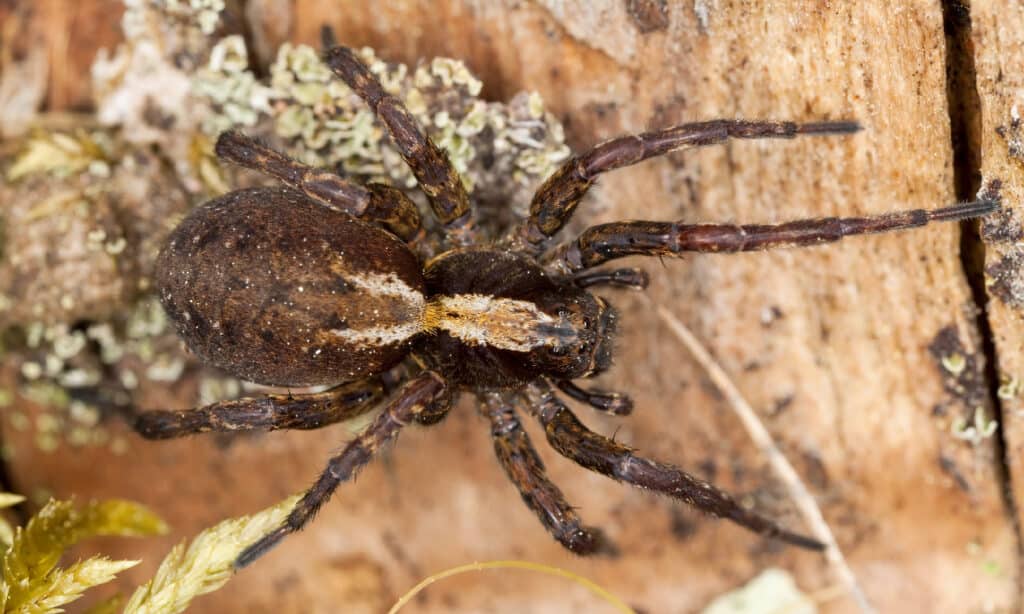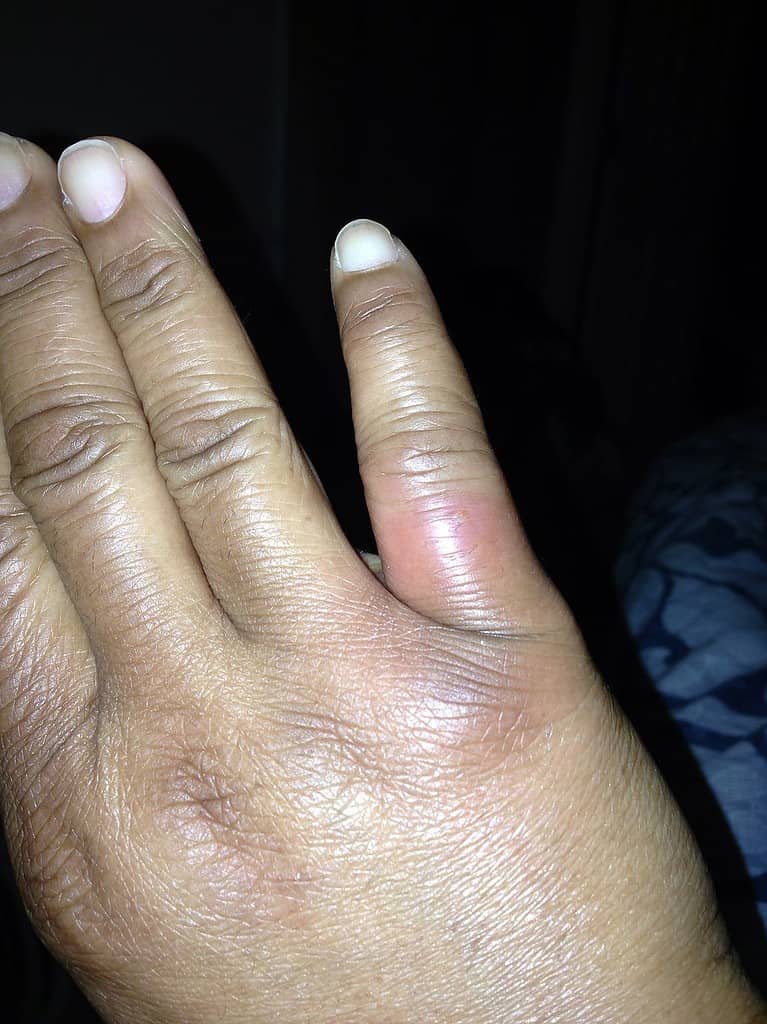Technically, all spiders are at least slightly venomous. However, the vast majority of species in the United States are not considered medically significant. Most cases of spider bites that require medical attention are those found in people with spider allergies and other sensitivities.
If you’re headed to Alaska this summer to enjoy the great outdoors in the wilds of the Great North, you will be happy to learn that there are none of these significantly dangerous spiders naturally occurring in Alaska.
There are, however, occasionally a few spiders that make their way there and should be watched out for.
Wolf Spiders: The Only Native “Dangerous” Spider in Alaska – Common

The
Wolf spider
is frequently found around Alaska during the summertime.
©iStock.com/Henrik_L
Wolf spiders are the most commonly found “venomous” spiders in Alaska. They are frequently found in the wild and occasionally indoors. However, their venom is so mild that they are not considered medically significant bites. If you are bitten and react, you likely will only develop a painful, somewhat irritated wound that is itchy. If it becomes worse than this, you should head to an urgent care center for some relief.
Wolf spiders are brown and furry and grow to a few inches in length, with long, skinny, hairy-looking legs. They generally remain outdoors but may head inside when the season starts to cool.
Brown Recluse: Venomous — Exceptionally Rare
Non-native to Alaska, brown recluse spiders are almost never seen here. Occasionally, they have been known to hitch rides in moving boxes and luggage, though, so they may be found on extremely rare occasions.
When they do make it to Alaska, they won’t survive long. The extreme cold of the far north state prevents these arachnids from surviving outdoors in any season save summer. There are so few confirmed cases that most people don’t even bother to learn how to identify them.
Brown Recluse Identification

The brown recluse spider is often identified by the violin-shaped marking on its body.
©Nick626/Shutterstock.com
For those who would like to know, born recluse spiders are reasonably easy to differentiate from common Alaska spider species.
Medium-sized at 0.24 to 0.79 inches in length, brown recluse spiders have long legs and come in light to medium brown coloration. They may be as pale as off-white or come in darker shades of brown and blackish gray. Often, their cephalothorax (or head/body combination) may be a different color from the abdomen.
They bear a distinctive marking on the dorsal surface of their cephalothorax. Dark black lines create a violin-shaped pattern, running the length of their bodies, in dark brown.
Brown Recluse Habitats
If a brown recluse has made its way to Alaska, you won’t find any of them out in the wild. They will on porches, in corners of garages, and similar, undisturbed places where they had fled after escaping the moving boxes. They rarely build webs, so you won’t spot any like that.
Symptoms of Brown Recluse Bites

Brown recluse bites will become red, irritated, and often blister.
©CC BY-SA 3.0 – License
Brown recluse bites are rarely deadly, and almost only ever for those with specific allergies. Rather, the bites create unpleasant symptoms that may last up to 8 weeks.
- The bite area will likely become red and irritated. Blistering may follow.
- Healing may take between 6 and 8 weeks for some individuals to heal.
- Exhaustion and lethargy may occur in those who are sensitive to spider bites.
- Untreated areas may bubble up into large blisters that spread. The wound becomes tender and may grow much larger.
- If the wound blisters, it will likely break down and become necrotic (broken down tissues) or ulcer.
- Flat purple or red spots or rashes covering the body may also occur.
If you believe that you or a loved one have been bitten by a brown recluse, it’s best to head to urgent care. Ideally, capture and kill the spider and keep in an airtight container. Bring along the container for the medical professionals to use for identification.
Other Spiders Found in Alaska

The black and yellow garden spider is a common sight throughout much of the United States, including in Alaska.
©iStock.com/AwakenedEye
As noted, the other spiders in Alaska are not dangerous enough to warrant concern. A typical spider bite from other species will simply become irritated. A simple over-the-counter spider bite cream or oil will help healing and reduce any itchiness that may occur.
Other spiders you might spot out in the wild:
- Long-bodied cellar spider – also known as Daddy Long Legs
- Black and yellow garden spider – also known as writing spider, corn spider, golden garden spider, and zigzag spider
- Cat-faced spider – or jewel spider
- Northern cupboard spider – known scientifically as Steatoda borealis
- Furrow spider – or foliate spider
- Common candy-striped spider
- Fierce orb weaver – known scientifically as Araneus saevus
- Daring jumping spider – or bold jumper
- Pacific folding door spider
- Shamrock orb weaver
Again, none of these are of particular concern, but they are fairly common. If you plan to hike while enjoying your time in Alaska, you may want to bring along some ointment for treating insect and spider bites.
The photo featured at the top of this post is © Cathleen Wake Gorbatenko/Shutterstock.com
Thank you for reading! Have some feedback for us? Contact the AZ Animals editorial team.






